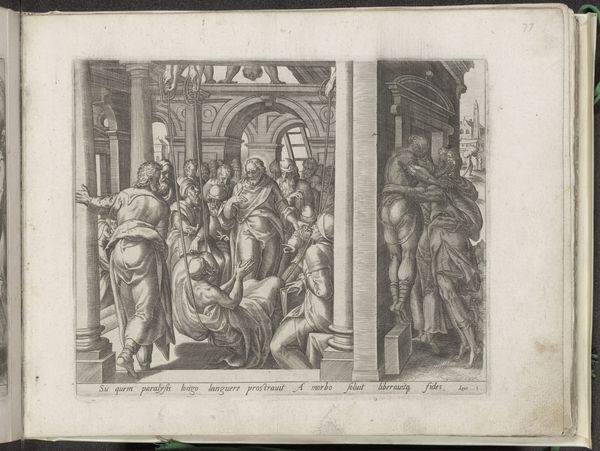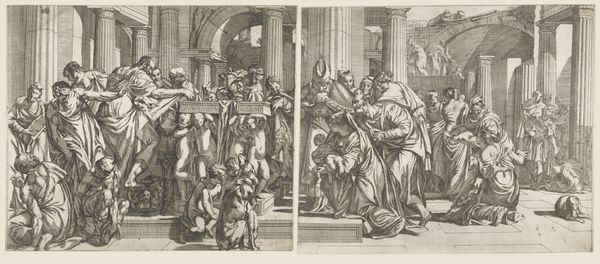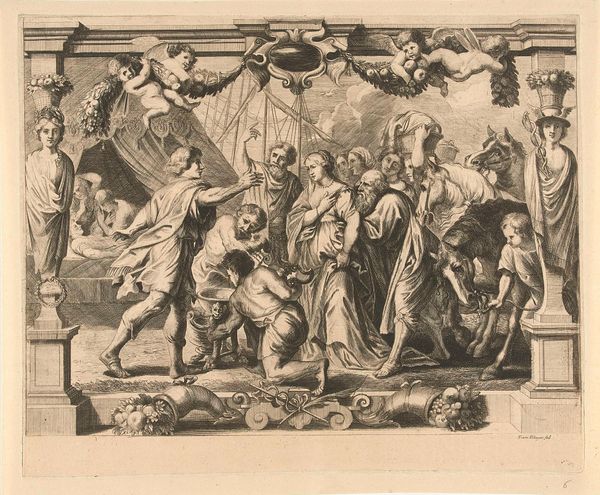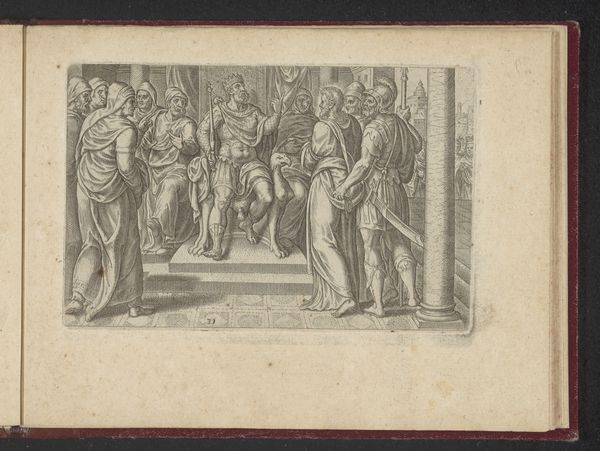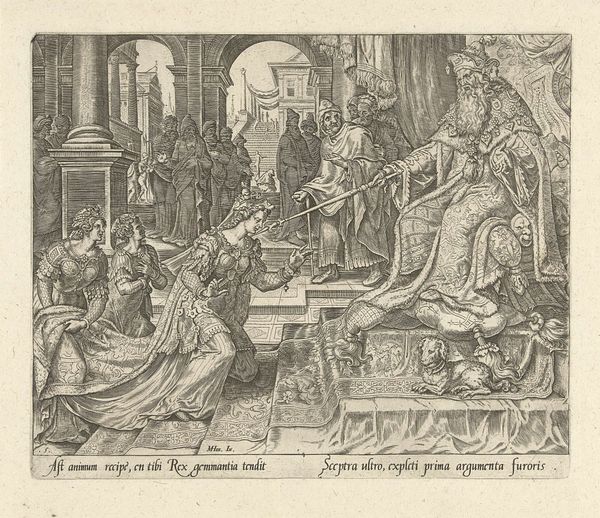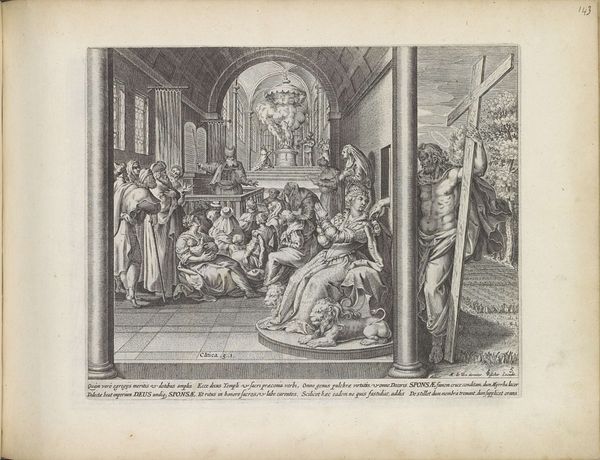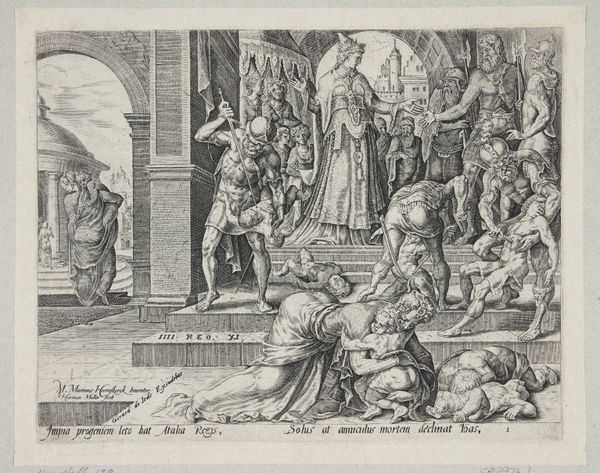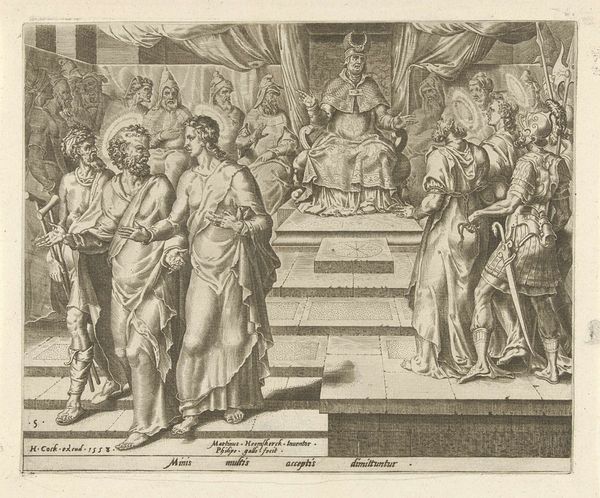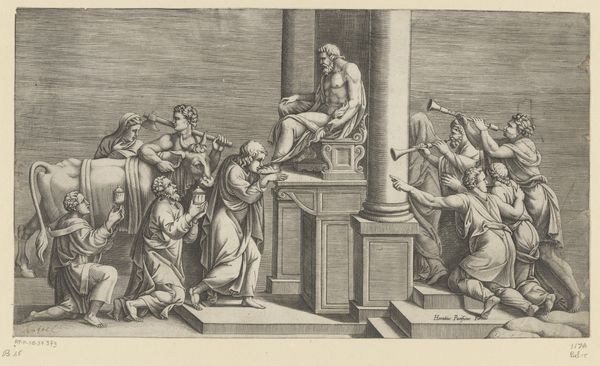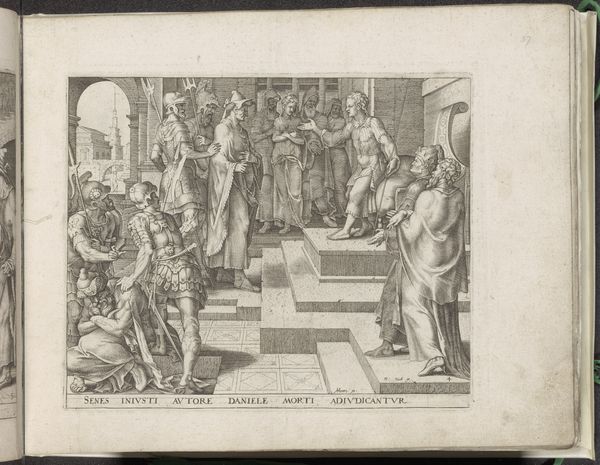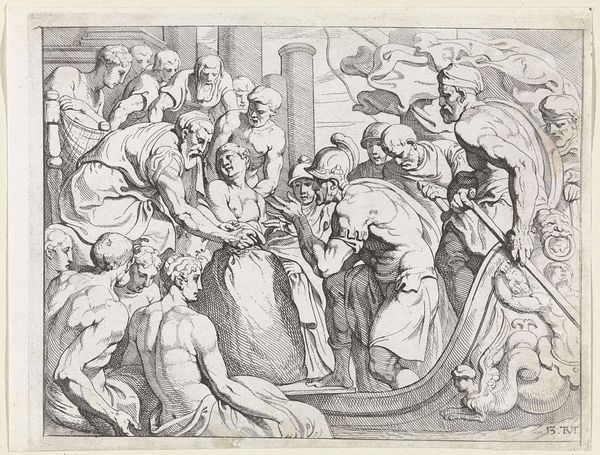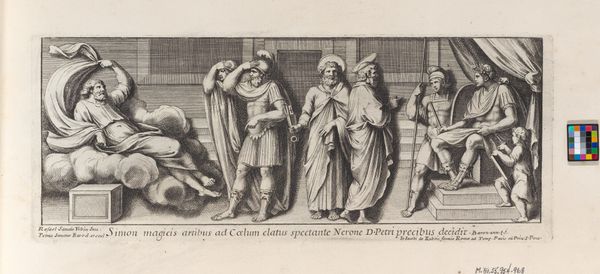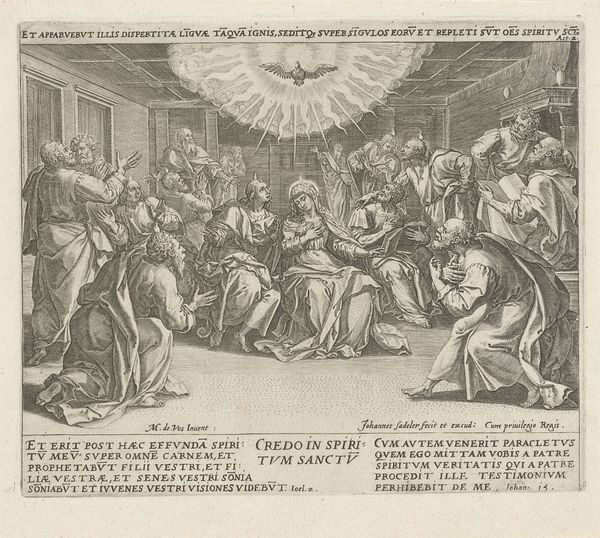
print, engraving
#
narrative-art
#
baroque
# print
#
pen illustration
#
pen sketch
#
figuration
#
history-painting
#
engraving
Dimensions: height 316 mm, width 518 mm
Copyright: Rijks Museum: Open Domain
Valentin Lefebvre created this print, “Christus geneest de zieken,” sometime between 1642 and 1682. It depicts a scene where Jesus is healing the sick. This print gives us a window into the world of 17th-century artistic reproduction and distribution. Lefebvre, as a reproductive engraver, played a crucial role in disseminating the works of Venetian masters, like Tintoretto, to a broader audience. But what does it mean to reproduce an image of healing during a time marked by social inequality and religious fervor? The act of healing becomes a powerful symbol, reflecting both the hope for divine intervention and perhaps a critique of the earthly powers that failed to provide adequate care for the suffering. How might Lefebvre, working within a system of artistic patronage and religious expectation, have used this print to subtly comment on the social dynamics of his time? Ultimately, the print invites us to consider the intersection of faith, art, and social reality. It reveals the emotional and material conditions of a society grappling with questions of health, salvation, and justice.
Comments
No comments
Be the first to comment and join the conversation on the ultimate creative platform.
